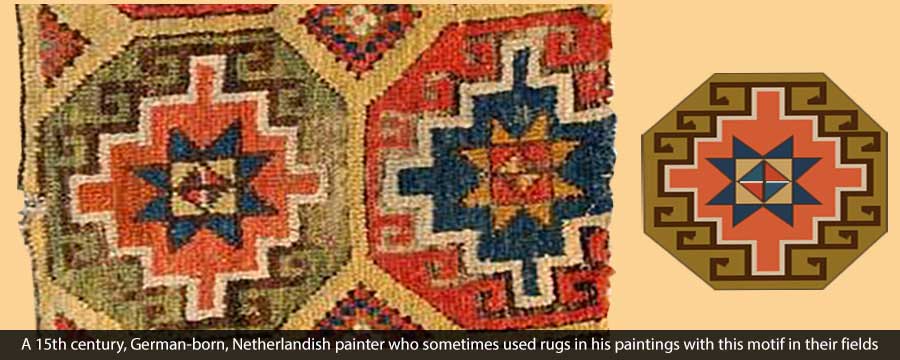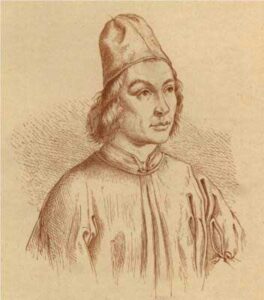MEMLING GUL
Memling Gul
Memling Gul is a common carpet motif named after the European artist Hans Memling (1430 –1494). He was a German painter who moved to Flanders and worked in the tradition of Early Netherlandish painting. He had used to picture carpets in his paintings.
Carpets depicted in Memling’s paintings mostly designed with a motif characterized by hooked lines radiating from a central denticulate body, usually framed by a linear octagon. These hooked lines usually called ram horns by the weavers.
Memling carpets have been surmised to be from Anatolia or Armenia. The simple geometric form suggest an old age for the motif, used all over the orient first probably in flat-woven pieces, and then in the piled rugs.
Gul, a Persian word for the flower, used by Turkic weavers to mention the medallion. In fact, the Memling Guls serve as medallions in Anatolian and Caucasian rugs, in both central medallion and three-medallioned designs.
Memling motif could also be found in Afshar, Qashqai, Kurd and Lur woven pieces.
Carpets depicted in Memling’s paintings mostly designed with a motif characterized by hooked lines radiating from a central denticulate body, usually framed by a linear octagon. These hooked lines usually called ram horns by the weavers.
Memling carpets have been surmised to be from Anatolia or Armenia. The simple geometric form suggest an old age for the motif, used all over the orient first probably in flat-woven pieces, and then in the piled rugs.
Gul, a Persian word for the flower, used by Turkic weavers to mention the medallion. In fact, the Memling Guls serve as medallions in Anatolian and Caucasian rugs, in both central medallion and three-medallioned designs.


